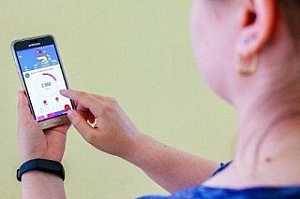TSU scientists developed a protective screen to reduce the harmful effects of radiation from mobile phones. It significantly reduces the level of microwave radiation on the human body, without worsening the quality of communication. The cost of the screen is less than 100 rubles and its service life is unlimited.
- Now the power of cellular phones has decreased significantly, but we use them much more often than before, so the effects on the body accumulate over time, and the consequences arise after 5-10 years, says Grigory Kuleshov, the director of the enterprise Radioprotection-T, an associate professor at the Faculty of Radiophysics.
According to the researcher, the reason for developing this screen was the statement of the World Health Organization (WHO) that for potential carcinogenic effects, the radiation of mobile phones can be included in the list with car exhausts and chloroform. In a number of studies conducted by WHO, there is evidence of a link between the long-term (more than 10 years) use of cell phones and the growth of a number of different malignant tumors. Therefore, protecting people from the harmful effects of electromagnetic radiation is important.
Early versions of the protective screen were made from materials from ferrites and carbon nanostructures. They had a thickness of several millimeters and were intended for use in a shirt pocket (suit) or a case for mobile phone, lying between the phone and the human body. Now, scientists have chosen a magnetic microwire with a diameter of 5-20 micrometers - it is much thinner than a human hair. The screen consists of a grid of microwire with a period of 1-2 millimeters and polymers.
- The resulting film is a little thicker than a sheet of paper, and this coating reflects harmful radiation, - says Grigory Kuleshov. - The screen is cheaper than previous developments, since it uses fewer materials and the cost is less than 100 rubles. At the same time, its term of service is unlimited.
The screen is primarily aimed at preserving the health of children, because most of them have their phones from the age of 7.
The scientists plan to receive a patent for their development.

